Baking trials: What's the best way to keep cheesecake from cracking?
One simple technique is your best guarantee.
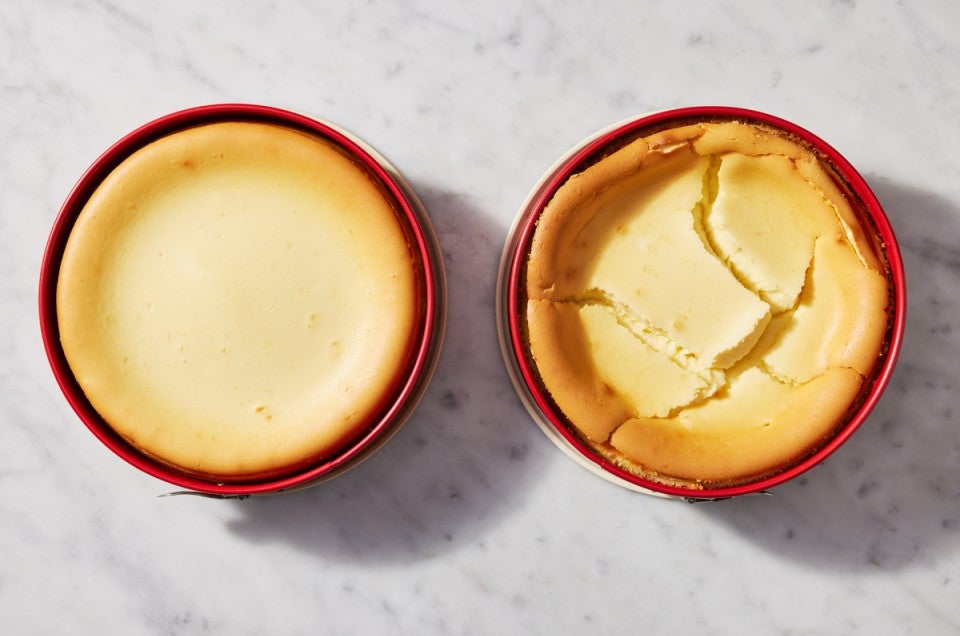

There’s nothing like a perfect cheesecake, its smooth top promising a rich, creamy dessert. But how disappointing it is when that beautiful cheesecake develops a deep crack right down its middle!
There are a number of reasons cheesecake cracks, either while baking or afterward. But let’s skip the science and jump right to the solution.
One of the biggest causes of cracking? Overbaking your cheesecake, which will almost certainly cause it to crack. There are several tricks you can use to prevent overbaking, and we were curious: Is one better than the other? Do any of these options not work? So we tested them with our NY Cheesecake recipe, and here are the results, ordered from least to most effective.
To successfully prevent cracking, this basic method requires an accurately calibrated oven and a very watchful eye on the cake as it approaches doneness.
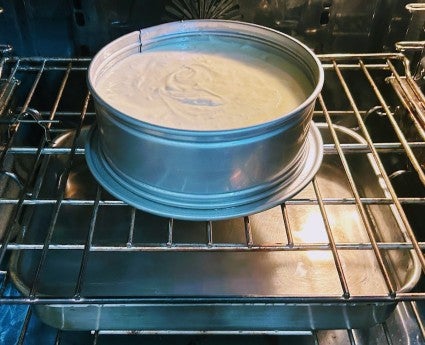
Some bakers like to add steam to their oven as the cheesecake bakes. While steam won’t prevent overbaking, it’ll help keep the cake from drying out as it bakes. And the more humid the oven environment, the less likely the cake is to crack.
Cake strips, insulating lengths of cloth that fasten around your pan, help keep the edges of a standard cake from setting too quickly, which is what causes undesired doming. While not intended for cheesecake, the strips are somewhat effective at slowing down how quickly the outer portion of your cake bakes — giving you a better chance for the center to be set without the edges being overbaked.
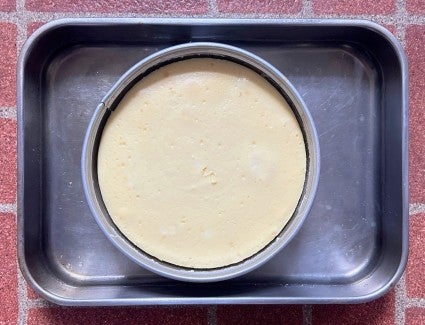
Centering your cake pan in a larger pan of hot water promotes a slow, even bake. Sometimes, the classic methods really are the best.
Your cheesecake is done when the outer edge is firm and the center is just barely set. But what does that mean in practical terms?
Measuring the temperature of the filling is the best way to gauge doneness. Insert a digital thermometer halfway deep into the filling. Cheesecake that’s baked all the way through without being overbaked will be a maximum of 175°F about 1" in from the outer edge, and at least 150°F in the very center.
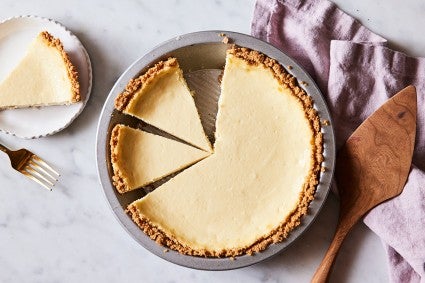
While overbaking is the chief cause of cracked cheesecake, here are some other factors that might promote cracking, plus how to deal with them:
Using a lower-moisture recipe: Cheesecake recipes that call for only cream cheese, eggs, and sugar are more prone to a cracked surface than those that include an additional liquid, such as sour cream or heavy cream. The more liquid in the batter, the moister it’ll stay as it bakes, and the less likely it is to crack. In addition, a cheesecake recipe that makes a thinner cake in a shallower pan — e.g., a pie pan instead of a springform — is less apt to crack, since it bakes more evenly from edge to center.
Overmixing: Beating the cream cheese, eggs, and sugar too long or vigorously introduces air to the batter, which weakens the cake’s structure and makes it more prone to cracking. Make sure your cream cheese and eggs are at warm room temperature before you begin, and beat slowly, just until the batter is smooth.
Cooling too quickly: Pulling your hot cheesecake out of the oven and setting it in a cold, drafty place to cool encourages it to shrink, which can cause cracking. Underbake your cake just slightly and allow it to cool gently in your turned-off oven. (Crack the door open a few inches.) Or cool it slowly in a warm, draft-free spot, such as your microwave: Place a cup of water in the microwave, heat for a couple of minutes, then turn off. Place the cheesecake in the microwave, where it’ll remain both warm and moist as it gently cools.
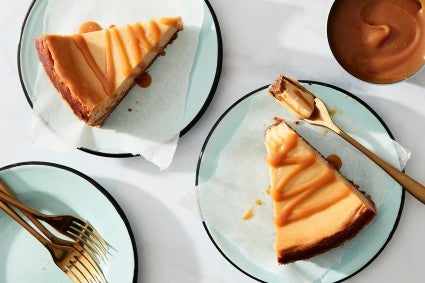
Looking for a tasty variation on the classic vanilla cheesecake? Try these popular recipes: sweet-tangy Lemon Cheesecake, perfect with fresh berries; decadent Chocolate Cheesecake; rich Caramel Pecan Cheesecake, or double-decker Pumpkin Cheesecake Pie!
Cover photo by Rick Holbrook; food styling by Kaitlin Wayne.


